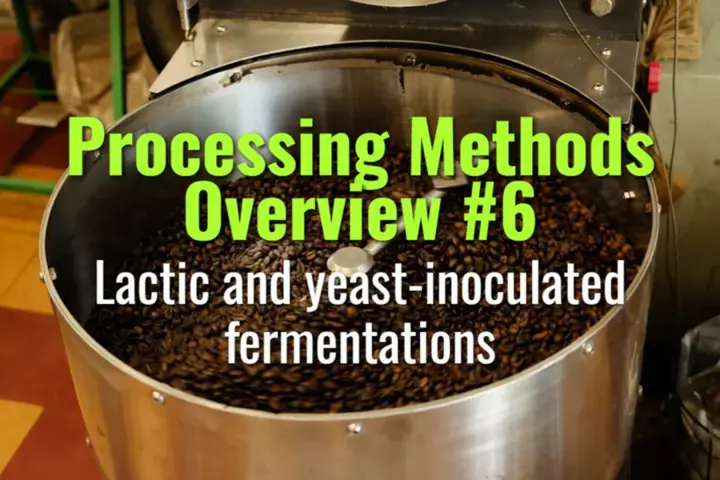Lactic and yeast-inoculated fermentations
This topic explores advanced fermentation methods using lactic acid bacteria and yeast inoculation, how they influence coffee flavor, and their growing role in specialty processing innovation.
- Coffee Basics Nerds
- 2 min read
Article 6 of 12 in Processing Methods Overview/

Lactic Fermentation
- Definition: Controlled fermentation using lactic acid bacteria (LAB).
- Process:
- Cherries or pulped beans placed in tanks.
- LAB introduced naturally or via inoculation.
- Produces lactic acid as main by-product.
- Flavor outcomes:
- Creamy mouthfeel, smooth acidity.
- Flavors of yogurt, tropical fruits, red berries.
- Increased sweetness and balance.
Yeast-Inoculated Fermentation
- Definition: Fermentation initiated with selected yeast strains (e.g., Saccharomyces cerevisiae).
- Process:
- Commercial or lab-cultured yeasts added to cherries or mucilage-coated beans.
- Specific strains chosen for desired aromatic compounds.
- Fermentation carefully monitored for time and temperature.
- Flavor outcomes:
- Enhanced clarity and consistency.
- Distinct fruit, floral, or spice notes depending on strain.
- More controlled and repeatable than spontaneous fermentations.
Advantages
- Greater control over microbial activity, reducing risk of defects.
- Ability to design flavor outcomes, appealing to specialty buyers.
- Enhanced consistency across lots and harvests.
Challenges
- Require scientific knowledge, lab resources, and monitoring equipment.
- Additional costs for cultures and infrastructure.
- Profiles may be considered too experimental or unconventional by some markets.
Market Context
- Increasingly used in specialty competitions to create standout flavors.
- Latin America (Costa Rica, Colombia) and Africa (Ethiopia, Kenya) leading innovation.
- Some producers collaborate with universities or biotech firms for tailored fermentations.
Lasting Importance
Lactic and yeast-inoculated fermentations highlight the intersection of microbiology and coffee craftsmanship. By introducing specific microbes, farmers and processors can unlock new dimensions of flavor, consistency, and market differentiation, expanding the horizons of specialty coffee.